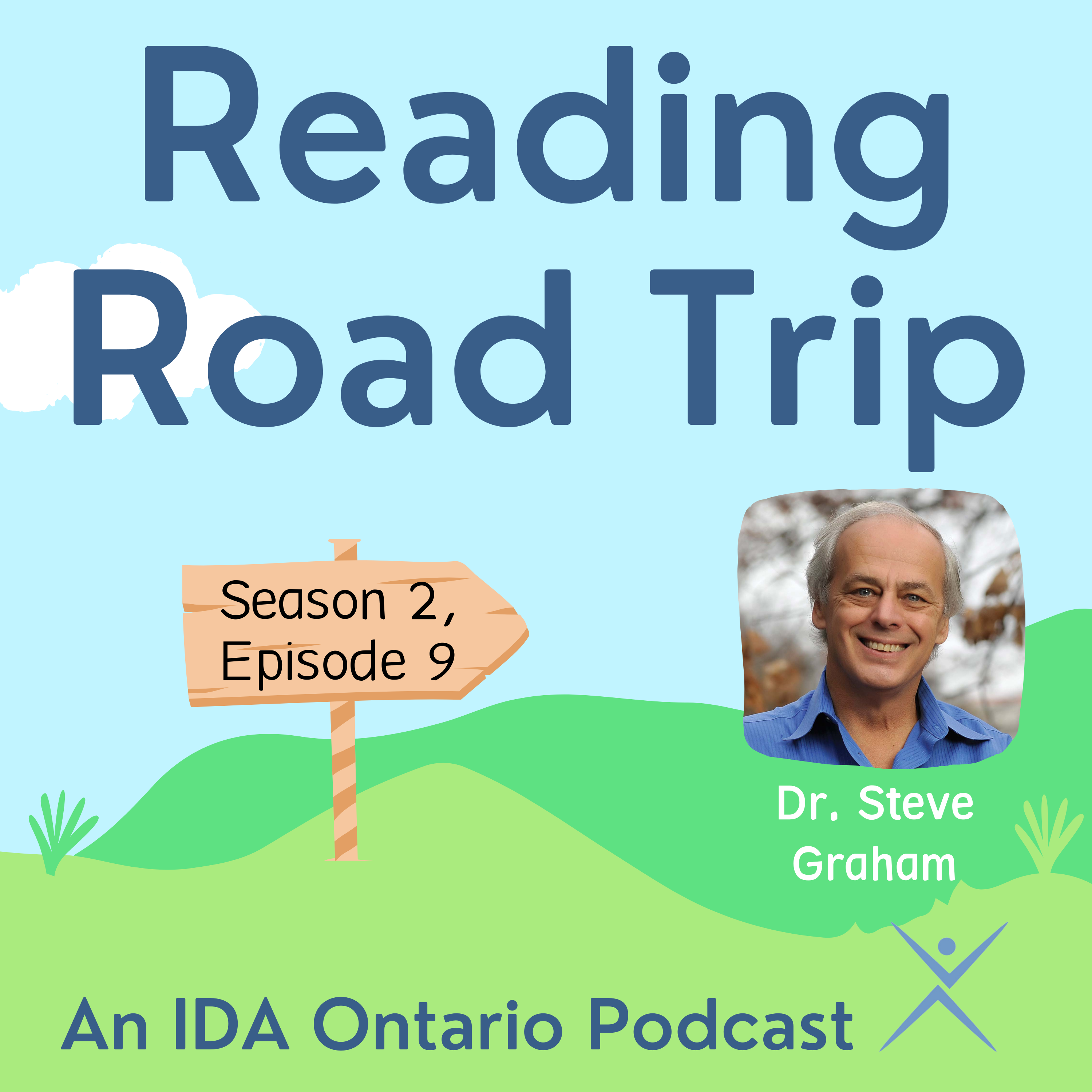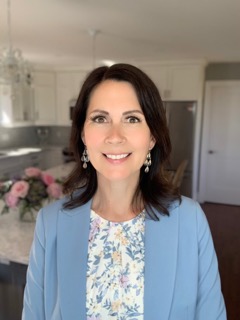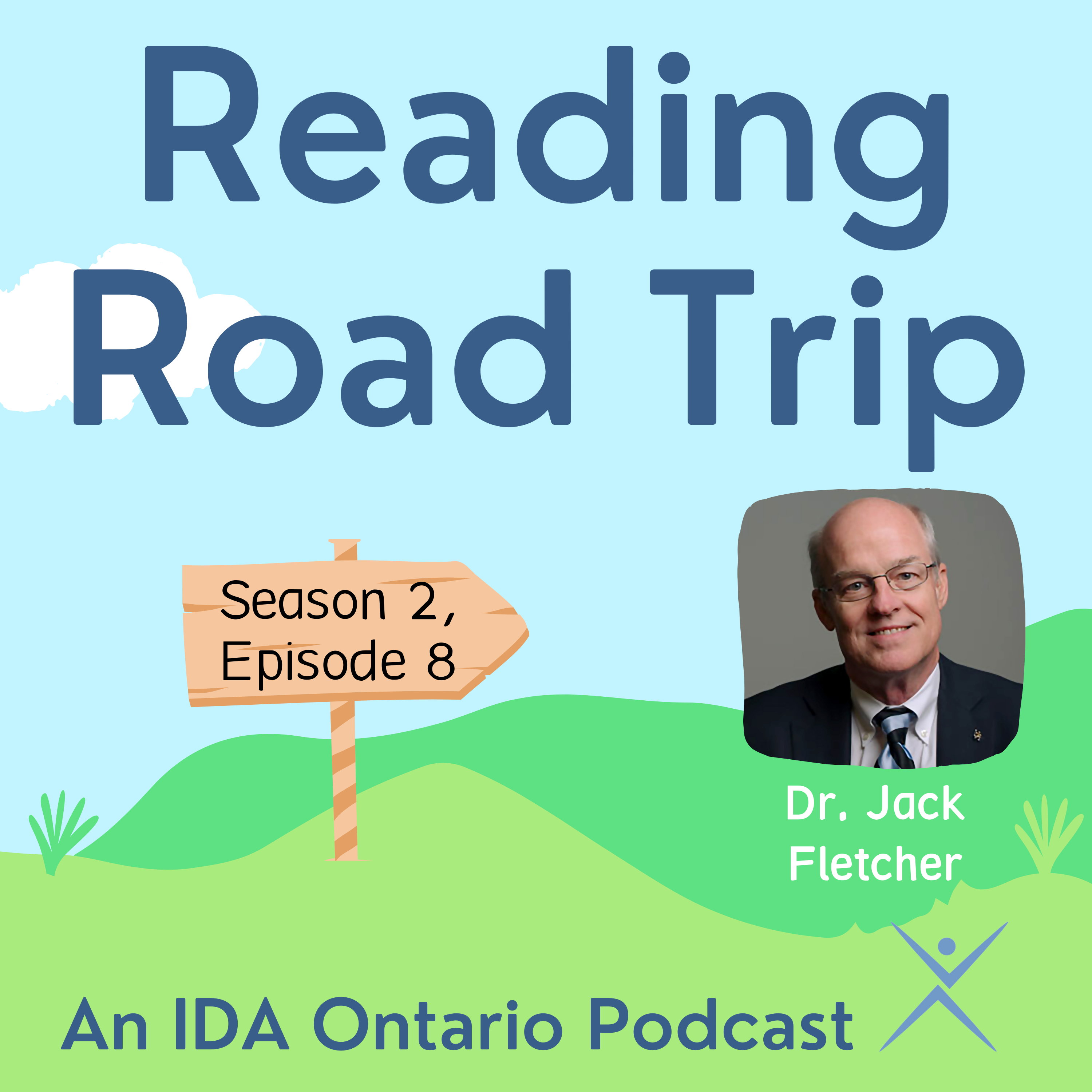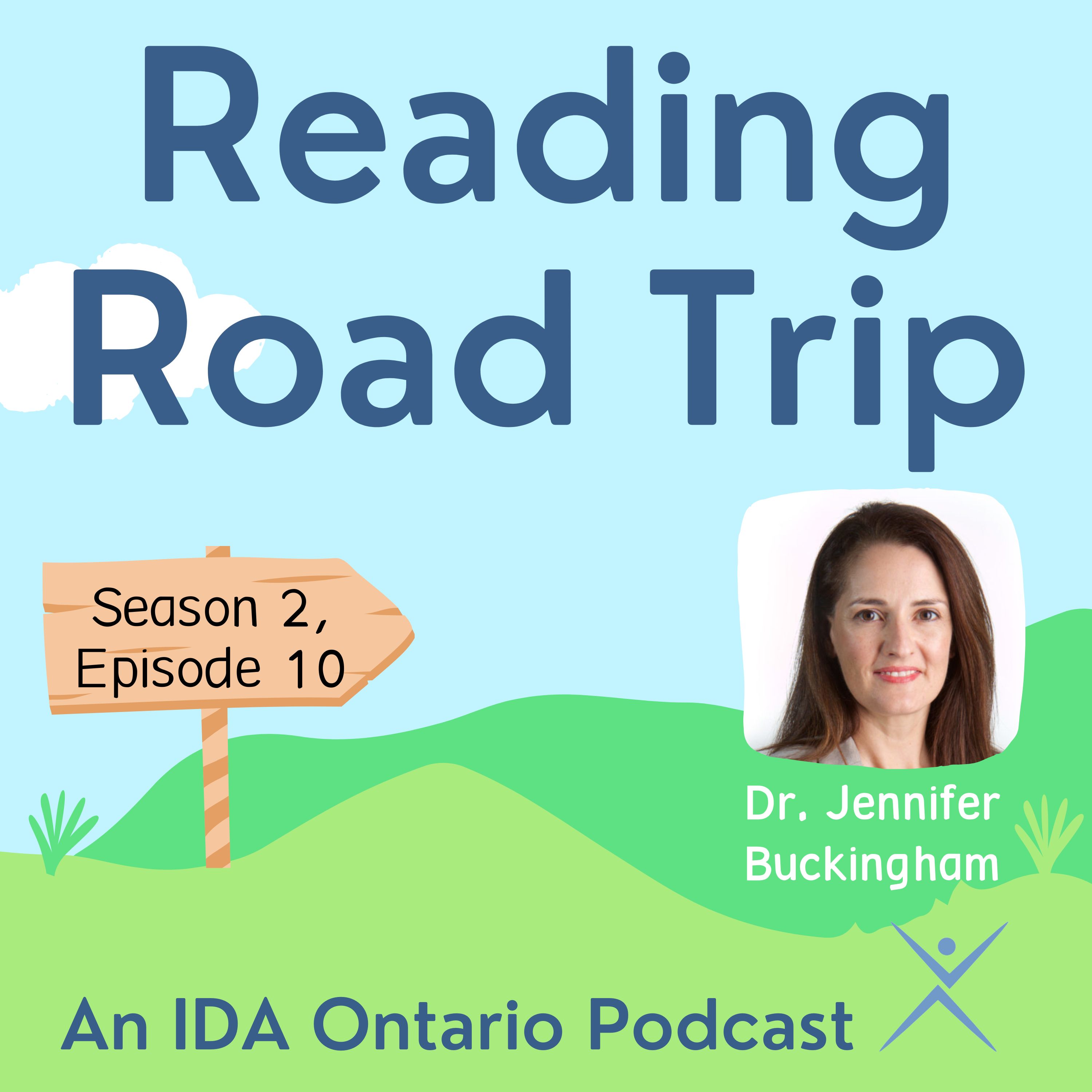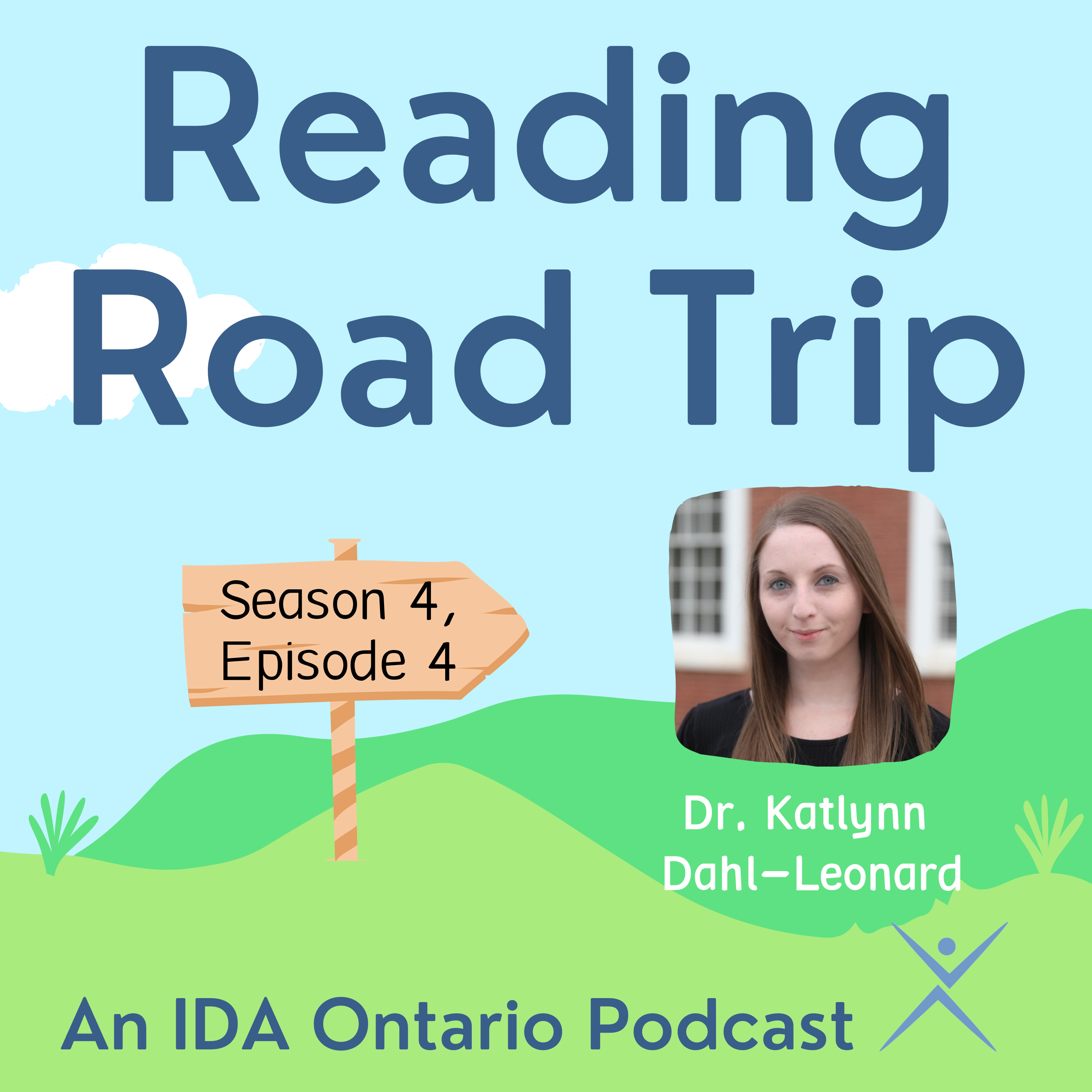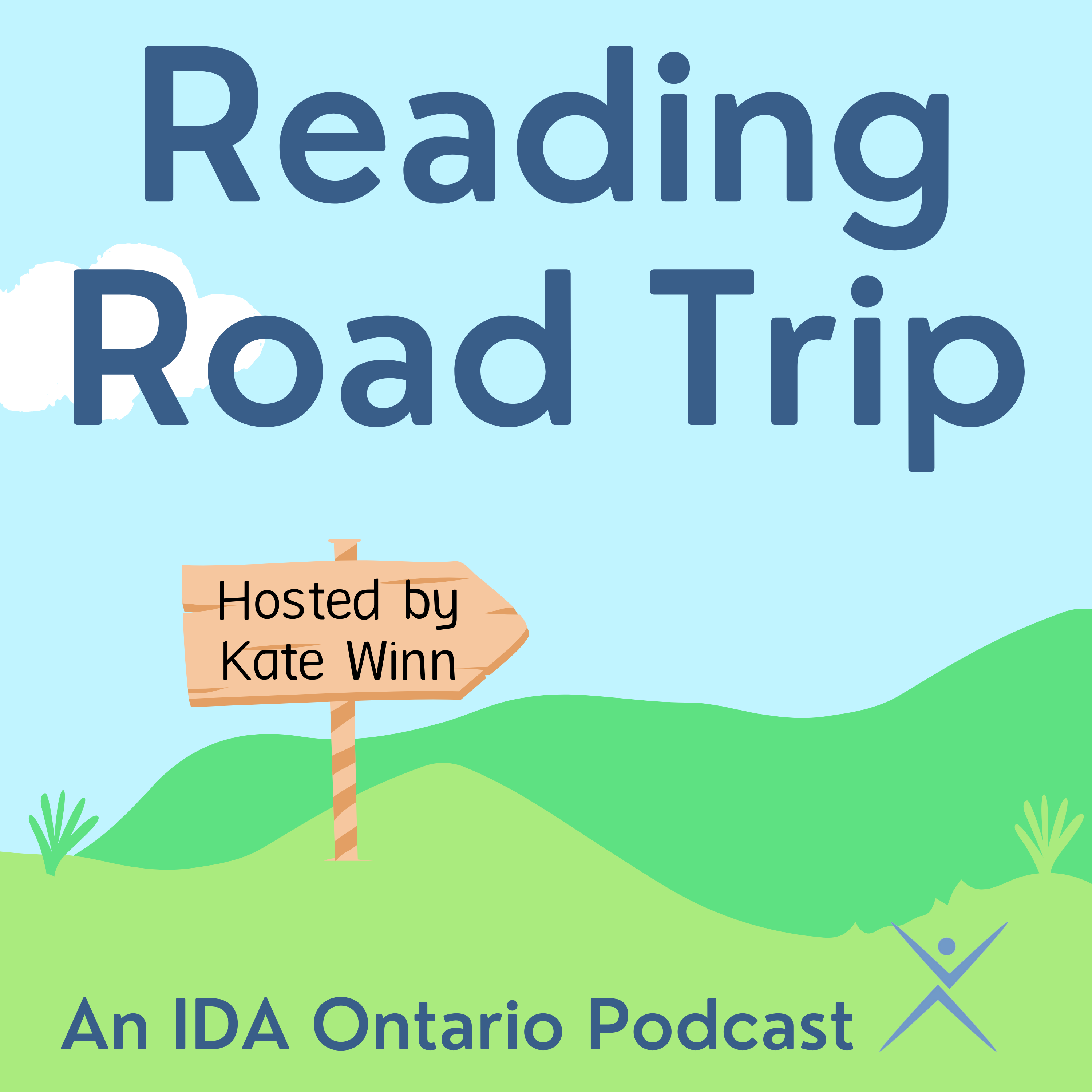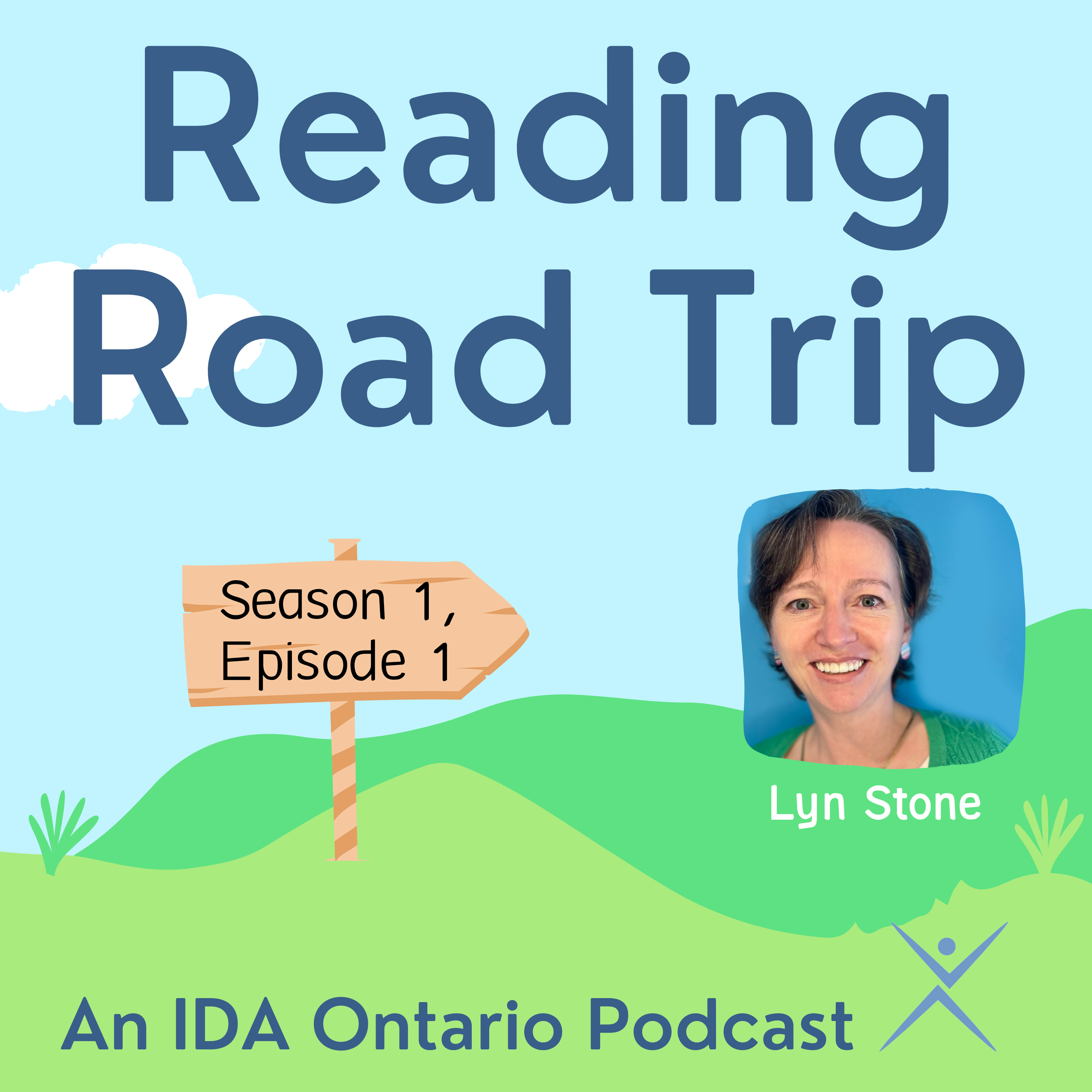Episode Transcript
[00:00:05] Kate Winn: Hello to all you travelers out there on the road to evidence-based literacy instruction. I'm Kate Winn, classroom teacher and host of IDA Ontario's podcast Reading Road Trip. Welcome to the show. We are so excited to be bringing you episode nine of our second season.
Before we get started, we would like to acknowledge that we are recording this podcast from the traditional land of the Mississauga Anishinabe. We are grateful to live here and thank the generations of First Nations people for their care for and teachings about the earth. We also recognize the contributions of Métis, Inuit, and other Indigenous peoples in shaping our community and country. Along with this acknowledgement, and in the spirit of truth and reconciliation, we'd like to amplify the work of an Indigenous author, and this week we are sharing the picture book We Need Everyone by Michael Redhead Champagne, illustrated by Tiff Bartel. Everyone has a gift. Every gift is different, and every gift is special. Our world needs you to share your gift. What is your gift? How can you use your gift to help others? We need everyone empowers children to identify their gifts and use them to overcome challenges, achieve goals, and strengthen communities. Inspiring and uplifting, this interactive picture book celebrates diverse cultures, perspectives, and abilities through playful illustrations. Perfect for reading aloud, and that was from the publisher. But I can tell you from experience in my classroom, it is indeed perfect for reading aloud. Add this book to your home or classroom library today. And now on with the show.
[00:01:40] Kate Winn: It is such a pleasure to welcome our guest here today on Reading Road Trip. Dr. Steve Graham is a Regents professor and the Warner professor in the Division of Leadership and Innovation at Mary Lou Fulton Teachers College, Arizona State University. For more than 40 years, he has studied how writing develops, how to teach it effectively, and how it can be used to support reading and learning. Dr. Graham's research involves typically developing writers and students with special needs in both elementary and secondary schools, with much of this research occurring in classrooms in urban schools. Dr. Graham is a recipient of the Thorndyke Career Award from Division 15 of the American Psychological Association, the William S. Gray Citation of Merit from the International Literacy Association, and the Exemplary Research in Teaching and Teacher Education Award from Division K of the American Educational Research Association, among other awards. He is the former editor of several journals, including the Journal of Writing Research, and is co-author or co-editor of several books and three influential Carnegie Corporation reports on writing. Welcome, Dr. Graham.
[00:02:49] Dr. Steve Graham: Thanks for having me on.
[00:02:52] Kate Winn: And I think we've definitely come to the right person when we listen to that bio, when we want to talk about writing today on the show - you are certainly the expert for this job. And I'm going to jump right in with the first question. We often hear writing referred to as the flip side of reading. And in some ways, it makes sense that decoding and encoding are opposites. But why is writing actually a more challenging task?
[00:03:15] Dr. Steve Graham: Well, there's a couple of reasons for this. One - in reading, you're interpreting information that's provided to you. In writing, you're having to create information, so you're having to draw on what you already know and sometimes combine information that you've acquired or gather information that you didn't know from outside sources and bring those together in a cogent manner. Another issue is that the production processes are more physical, in a sense, in writing. So you have handwriting, spelling. You actually have to produce text and get it onto page or type it and get it onto page. And until those skills are mastered or automatized, they can interfere with other writing processes. I'm not saying that reading can't involve creativity because you can creatively interpret what you read, but writing is much more likely to involve creativity in terms of how you're going to put your ideas together and maybe even present them in a new way. So those are just some of the ways. It's kind of like it's easier to listen than it is to speak cogently. So it's a similar flip side of the speaking and listening continuum.
[00:04:33] Kate Winn: I like that I get to just ask you a question and just sit back and listen. You've got the harder part on the show today. So next question. As a classroom teacher, I currently teach kindergarten. I really like the writing models that divide it into the handwriting, spelling and composition. I kind of find those buckets sort of easy to wrap my mind around as a teacher. And I'd like to ask you a bit about handwriting first. Here in Ontario, we have a brand new language curriculum that just came out last year, and it includes, which it hasn't for a long time, specific expectations around handwriting. Is there research and an evidence base to support having that handwriting instruction in the curriculum? And what are some best practices for that in the classroom?
[00:05:16] Dr. Steve Graham: There is research supporting the teaching of handwriting. And I think you can come at this in two ways. Handwriting basically involves two components. One is, can you read it or is it legible? The other is a writing component, and that is, can you produce it quickly? And so both of those have effects. And so if you think about the writing one, this has happened to everyone anywhere who's ever written their hand is not fast enough to keep up with their thoughts. And so you're writing along. And even for mature writers, sometimes ideas come so fast you can't get them down onto paper. Now, think about being a first-grade kid who basically 20 letters per minute is their production process, and they've got a story churning in their head and they're trying to get it out. And you can see where that might interfere with writing because you might lose information if you have a plan for what you want to say next, that might slip out of your mind, et cetera.
In terms of the reading part, this is a little insidious, but there's a good bit of research that suggests that if you make the same text, you don't change a word more or less legible, it has a huge effect in terms of people's perception of the quality of the ideas in the text. So handwriting not only influences the writer, but it also affects how your text is perceived by the reader.
In terms of teaching handwriting, it's fairly straightforward. Basically, handwriting is a motor skill. And so what we typically do with motor skills is we have short practice sessions over time to master those. And so the way that this typically plays out in terms of handwriting is that we might introduce a single letter or a group of letters that share similar characteristics. And what we do is we point out how the letter is formed. As a teacher, we model how to produce that letter. We might actually verbalize those steps as we do so. And then what we might have students do is trace the letter so that they get a feel for the motor process, write the letter three or four times from copy and write it several times from memory. Now, at that point, we probably don't need to have the students say the same verbalizations we did, because eventually that can slow their writing up if they continue to do that. But doing that once is not going to be enough. And so in the work we do, usually that means if we introduce a letter in a week, we have three practice sessions in that week, and then later on we come back and review it. So you do need to make sure that you can maintain legibility of letters. The other part of this, I mentioned two parts, legibility and fluency. So, obviously, if you don't know how to form a letter, you're probably not going to be very fluent at it. But fluency mainly develops as a result of writing. So the more you write, the more fluent you become. Now, sometimes what we do is we give that a little push. So if we're introducing l i and t, which if they're print letters, they share common characteristics. We might have students, at the end of that first session, write a couple of words with, like, little that has all three of those letters in it. And as we move to that third lesson, at the end of the week, they would be writing a short sentence, and we might ask them to write that as quickly but as legibly as they can. So it helps one make sure that they stay legible, but also make sure that they know that fluency is important, but it's really writing that moves fluency forward.
[00:08:58] Kate Winn: So the next kind of bucket moving on is that spelling one, and I don't want to spend too much time on spelling today. I know we've talked about it on the show in the context of early literacy and phonics in other episodes, but I don't want to lose this opportunity to ask you, with your expertise, what would you say in terms of spelling is the biggest mistake teachers make at any grade level when it comes to spelling instruction?
[00:09:23] Dr. Steve Graham: Well, I'm going to actually say two. One is not teaching it.
I think that's a mistake. And the reason for that is english spelling is difficult because maybe 60%, it's been estimated, of our words that we have to learn to spell to be competent writers, kind of fit well the pattern between symbol sound associations that we expect, but another 40% do not. And that's because we have Greek root words, Latin root words. We have words that have come into the spelling system in various ways. The other part of this is that we often see teachers just give students a list of words to study each week. And I'll give you a really poor example of this, and I don't mean this as a discredit to my daughter's fifth-grade teacher when she was in elementary school, because she was really a great teacher, but spelling was not her thing. She had students each week pick words that they wanted to learn to spell. And that actually sounds like a good idea. Right. It should be motivating. What she found was that her students in the class didn't spell so well, so they were picking really hard words, because that meant if you had an individualized list and you were going to be tested on it, you had another peer testing you on it, and nobody wanted to look like they had simple words. And so we want to be sure that when we have students study words on a weekly basis, that what we're really emphasizing are the underlying connections between sound and symbol that are consistent. So usually what we do is if we have students studying 15 spelling words in a week, we'll have two or three spelling patterns in there that we help students focus in on and then also generate words that fit those patterns as part of the learning process.
[00:11:13] Kate Winn: So kids may have the handwriting piece in place, they may have the spelling piece in place, but composition can still be a big hurdle. And I know you have written many publications that highlight classroom strategies for writing instruction that studies have shown to be effective, and I'd like to ask you about some of them and what they might look like in the classroom. So the first one is explicit writing instruction I know has been shown to be effective, including teaching students strategies for planning, drafting, and revising. How can teachers best do this?
[00:11:45] Dr. Steve Graham: Well, I think there's a couple of things to keep in mind here. So what we're really talking about when we talk about planning, drafting, revising, and editing are the primary production processes for creating text. And sometimes when we say them like that, planning, drafting, revising, and editing, it sounds like they need to go in that sequence. But what we'd really like is for them to be recursive so that when kids plan, they also make revisions in their plan to make them better. When they're writing, they keep the planning process going, and they're obviously, hopefully going to be making some revisions as they write and so on. So I want to point out that we want to have those processes in place, but not be so stuck on them occurring in a particular order. The second thing is, each of these processes require strategies to carry them out. So just think about planning for a second as kind of an example.
Basically, if we want to think at a very simple level, you have some goals for what you're going to write, and those could be goals for what you're going to do or what you're going to say. You have to get content and you have to organize it. So there's three processes in and of themselves. And to make that more complex is that we might be writing a story, which we're expecting a certain structure for, or a persuasive essay, which a different structure is typically used. So one of the things that's very important is that we teach strategies that correspond to the genre that we're working in. So let me give a really simple one. So, basically, stories involve a setting and a series of episodes. So a setting is who, when, and where. So pretty simple, right? Episodes usually are. Something's happened, the protagonist has a goal, it isn't always stated, and there's a series of actions to meet that goal. And either the actions are successful or not, and maybe along the way, people have some reaction to what various characters do to what's happening.
And so you could think of this in the basic fairy tale, the princess is kidnapped, or the prince is kidnapped, the prince of Cessagold. To rescue the prince, there's a series of actions.
The prince is elated when he is rescued, so on. But you see those basic elements there. So one way of doing this, a strategy we use, we initially called it WWW, what equals to how excluded. I know that's a real handle, but the first three w's are who, when, and where. You have to think about that before you start. Then what equals to and how equals to what does the main character want to do? What happens, how does the story end, and how do the characters feel? So we ask kids to think about those things in advance of writing, and particularly when they're first learning to write stories. Now, as they become more sophisticated in story writing, we could start with just the characters, what the main character wants to do, and leave the rest out, except for the ending, which is a way that many professional writers write. But if we take that strategy, we explain to students why it can help them in terms of story writing. We model how to use it. With them helping us do it, we might do it several times. Then we ask them to practice using it with supports in place, and those can occur. Include a graphic organizer to help you plan using the WW, what equals to how equals to, and also working together with peers because they help each other. And we start taking those supports away until students can do it independently. And so that's the important part of strategy instruction, is not only do we explicitly and systematically teach the strategy, but we make sure that students can do it on their own. At the full end of this, we also discuss with students how we can make the strategy better. Sometimes that occurs during, but it always occurs at the end of this. And students often have very good ideas of how they can apply it in other situations and make what they're doing even better at that point. Now, you can have individual strategies for planning, drafting, revising, and editing, but it's kind of easier to demonstrate one strategy versus all of those together.
[00:16:15] Kate Winn: Along with your research partner, Karen Harris, who also happens to be your wife, and other colleagues, you've created a self-regulated strategy development approach to teaching writing, which has seen great success. Could you please outline what exactly is SRSD?
[00:16:31] Dr. Steve Graham: Okay, so let me first state that Karen actually is a developer of SRSD. So my role in this has been developing some of the strategies that are taught as a result of the teaching procedures, which is what SRSD is. So what I just described a few minutes ago on the explicit instruction is a gradual release model. We show students practice, and they do it independently. So that's integral to any kind of strategy instruction and is a primary part of SRSD. In addition, before we start teaching the strategies, we make sure that students have the knowledge that they need to apply the strategy successfully. So think a second about the story writing strategy that I mentioned earlier. Basically, that's predicated on you knowing what the basic elements of a story are, right? The setting and those elements and specific aspects of the episode. And the way that we do that is we start by reading stories, and we have students help us point out what makes a good story, always kind of leaning towards that, the who, when, and where, what does the main character want to do, what happens, et cetera. And with that kind of established, then it's a lot easier to introduce the strategy. The other important parts of this is that SRSD, self-regulated strategy development, places a large emphasis on regulation.
And basically, by regulation, we mean regulating your behaviour as a writer. And so the strategy helps do that because it gets you planning in advance. It helps you direct your thoughts and behaviours in particular ways. But we add to that common self-regulation procedures like goal setting. So students set goals for the use of the strategy or specific things they want to do in their story. They monitor whether they're successful at that and make revisions. If not, we also teach them how to self-reinforce when they are successful, because often we find that kids don't always know when things are working out and when they're not, and often fail to reinforce themselves. And for some kids, we work on some things that they can say themselves or self-instructions to help guide the process. We also make sure that students can see their progress as they're progressing through the use of the strategy. And in conferences with students, we emphasize what makes a good writer and why your writing is gotten better, because you can see it, because they're graphing their performance is effort and the use of the strategy. So you can think of it like this. You have a strategy to teach. There's a gradual release model in place. We're making sure students have the knowledge to use the strategy, self regulation procedures, et cetera, appropriately. We're teaching them self-regulation procedures for managing the writing process, the strategy, and their behaviour. And we're making sure that they can see their progress and that they believe that the reasons for their progress are effort and strategy use.
[00:19:39] Kate Winn: And from what I understand from the research, that self regulated piece isn't just sort of an extra optional add-on. That's actually a really key part of the effectiveness of the whole system.
[00:19:50] Dr. Steve Graham: That's correct. So when we've done some studies that have taken a look where you compare the whole SRSD to a slimmed down version of it without, say, goal setting and self-monitoring in it, and what we find is that there's a considerable drop. It's effective, and it's still a little bit more effective than other approaches to strategy instruction. But the drop is, from a technical point of view, half a standard deviation. And so that's a significant drop. So those goal-setting, self-monitoring, self-regulation procedures make a difference in terms of how well students do with SRSD.
[00:20:30] Kate Winn: Another effective, explicit instruction strategy is teaching students the structure and form of both narrative and expository text. What would this look like in the classroom?
[00:20:41] Dr. Steve Graham: Well, so one of the ways of thinking about this is kind of like what I mentioned about knowledge with SRSD. So with SRSD, it's blending a lot of things together, right. But you could also approach, like if you're say, teaching a personal narrative, you could approach that by reading and evaluating and analyzing personal narratives. You could have a model, and you use that model, you try to emulate that model after discussion to create your own stories. So that would be one way that you could approach this. And that technique is a couple of thousand years old using a model, Benjamin Franklin, although not 2000 years old, this was a model that he used to become a better writer, and people have used it since the time of the Romans. Another approach is to extend that by not only kind of reading texts that say our story or personal narrative, but then having discussions around that about what the author did and then practicing doing some of the same things with feedback from the teacher. And so that's adding another step in between the modeled text and the emulation, where you're getting a little bit more direct instruction. You're trying out a piece of it and you're getting feedback on it, and you make revisions in it. And so a slightly slower approach, but probably a bit more effective as well.
[00:22:05] Kate Winn: And next, I would like to get your thoughts on scaffolding. So we've definitely heard a lot about this when it comes to reading, and I think I've wrapped my mind around that. What are your recommendations for scaffolding writing for students?
[00:22:17] Dr. Steve Graham: Well, so the idea behind scaffolding is that we have this linked in terms of explicitly teaching between us showing and students doing. And so it would be great if all kids needed to do was see someone else do something, and that they could emulate that with perfection. But that doesn't happen for adults, much less with kids, for anything that's complex, like writing. And so what scaffolds do is it helps you along the way. And there's various types of scaffolds. So in one sense, the scaffold could be some kind of hint that a teacher gives. So I've asked you to use this procedure. Let's say that I'm teaching you to combine two sentences into one that's a little bit more complex. The dog is big, the dog is black, and what we've done is we've come up with the dog is big and black. Of course, it can be done in other ways, but let's say that we're doing that, and then we give students another set of sentences that are similar, and the student's having some difficulty with it. So one of the things that we might do is give a hint. Well, you have the dog twice in one sentence. The other, you don't need to have the word dog twice. So we get them started with that. Another way of doing scaffolding is remodeling. Just because we model once doesn't mean that students are going to get it. Sometimes it takes multiple helps at modeling. We can also have a series of steps that we remind students to carry out to do something. And then what we do in terms of scaffolding is remove those steps as students start to be able to do one or more of those successfully with the idea that they can generate the steps independently. As I mentioned before, now scaffolding is not easy to do in the classroom because there's one of you, and depending upon the size of your classroom, maybe 25 kids.
So one of the ways of thinking about it is that you build the scaffolds in at first without trying to do it on the fly. So you have a good sense. If you're going to have a series of steps, you know what those are. And then what you're doing is you're moving students away from having the visual representation of those steps to having maybe a mnemonic to remind them of it and then them doing it independently.
But it's very hard to scaffold on the fly.
[00:24:39] Kate Winn: I have read in your work that increased time writing can also have a positive effect on student achievement in this area, which would make sense, but with limited time and so many things to teach, the million dollar question always is how can we maximize that time in our busy school days to get in as much writing as possible. What are your tips and tricks?
[00:25:00] Dr. Steve Graham: Well, I want to back up on what you just said. We've just completed two very large meta-analyses, one with grades six to twelve and one with kindergarten and grade five. It used to be that we saw if you increased how much time students wrote in the younger grades, it would have a positive effect both on writing and reading comprehension, but not on secondary-age students.
In the newest meta-analysis, it didn't have that effect, and these new meta-analyses include a lot more studies. So I'm a little hesitant here on that. Now, on the other hand, writing about material can increase your understanding about it, material you've read or material you're trying to learn in the classroom. So it's important that that take place. In addition, the whole purpose for teaching writing is so that you can write. So if you took that out of play, that's really limiting what students can do. And I think an analogy to this is think about the National Reading Panel’s report. Basically, what they talked about was what you would teach but not reading itself. And really, the game is reading. The game is writing. So even if we don't get the effects that we might like by increasing how much students write or necessarily they read, we want students to engage in those activities.
Now, in terms of increasing that, I think there's a couple of things that get in the way. One is that I've heard this repeatedly from administrators. I used to say you need to double the amount of time students write in your classroom. I have no idea if that's true or not. Catch their attention. And administrators would always say, we can't do that, our teachers can't do that. And I'd say, why? And they said they can't give feedback on all of that writing. And I understand that concern, especially if you're a middle school teacher or a high school teacher and you have a caseload of 120 students. However, we don't have to give so much feedback on every piece of writing. In fact, we probably overdo it, and I think that may have some harmful effects. Second, peers can give each other feedback. And third, there are some things that you don't need to give feedback on. Basically, if you're using writing as a tool for learning, I don't need to look to see that this is structured in a great way. What I'm wanting you to use writing for is to think about that material a little bit more. The other thing is, given that writing does affect learning and reading comprehension, we want to expand it outwards, not just during writing time or language arts, but in science, social studies, and mathematics and other areas as well. And there is evidence that having students write in those content areas or those disciplines makes a difference from the earliest elementary grades through high school.
[00:27:51] Kate Winn: And that totally connects to what I was going to ask you about next. So what do we know in terms of the research and evidence to support having students write about their reading? So, for example, writing about their social studies or their science or writing about literature? What kind of effects can that have on either the writing piece and or their actual understanding of those content pieces?
[00:28:10] Dr. Steve Graham: Yeah, so I think one way of thinking about this is to think about why would writing about anything, whether it's material read or information presented orally, be helpful?
So one of the things you have to do when you write about something read, we'll stick with that, is you have to decide what's important. So you make explicit what you think are the most important things, the main ideas, or the things that stand out to you. A second thing that often happens when you write is you have to take that information and organize it in some way. Think about a summary. You have to pick what's most important, often bringing things together, and then you have to present that in an organized fashion. In addition, when you write about something, you have to handle it. Basically, you're rehearsing it again.
I read this material. Now I'm looking at it again, trying to put it in something that makes sense. I'm handling that information. And whenever you have to rehearse or handle information, you typically understand it better and remember it better. Another thing that happens is that you have to put it in your own words. And when you have to manipulate it that way, that also involves, it's a personal involvement with that material, which may help you understand it better. And then also whatever you write, you can look at and reflect on and change. So it gives you an opportunity to rethink what you're looking at. Now, not every writing activity involves all of those things, right? So I could just ask you to make a list of the five things that you thought were most important in what you just read. So you're not really having to do much organization there, but you are having to do most of the other things. But as soon as if I ask you to write a persuasive text telling me why an idea, you agree with an idea and text, all of those things are going to come into play, and so they can increase your understanding and remembrance of material read. Or in the case of classroom material presented orally, have a better grasp of that information as well. And the effects are not small on this, they can move you forward. I think a way of thinking about this is if you have students who are doing this over a year's time who are, say, at the 50th percentile in your class, it'll move them forward about 18 percentile points over kids who are not. And that's a nice jump.
[00:30:41] Kate Winn: Yeah, definitely makes it worth thinking about that in the classroom in writing. Next, you mentioned the importance of study of models, which provides students with opportunities to read, analyze and emulate models of good writing. Do you have any go-to ideas for where teachers can find these quality models of different forms of writing?
[00:31:02] Dr. Steve Graham: Yeah, this is a bit more challenging than the research often suggests. Right. So if you're eleven years old and I give you a model of a story written by an adult, what are the chances that you're going to be able to emulate that? Because that's what basically you're doing. And so one of the things that we've started doing is we actually create our own models based on something that students have written and we enhance those a bit so that they're more age or grade-appropriate. Now, that takes time. Right. So that's the disadvantage to that. But one of the things that we've seen teachers do over time is collect the writing of their students. And they sometimes take, if they're working with 6th grade students, they'll take the best writing of some of their 6th grade students to present as models. And then that's a more achievable objective than writing the perfect text, right, you know, written by a professional.
And so my actual recommendation is to try to draw upon your own students writing over time to do this with a little fudging on what they wrote.
[00:32:13] Kate Winn: Thank you. Great suggestion. Is there anything about writing that we haven't discussed yet that you want to share? Any final message you want to leave teachers with when it comes to this incredibly important topic?
[00:32:25] Dr. Steve Graham: Yeah. One of the things I think is important to keep in mind, and I think this is an issue in reading as well, is that we're so focused on achievement and product, say, in writing, that we sometimes forget that really our goals ought to be that students become the best writers they can be, but they also are motivated writers. Now, motivation is pretty complex because it covers a lot of ground, but one aspect of it is that you're confident in your capabilities. And one of the things that we find is that students who are more confident about their capabilities are better writers and the better students become as writers, the more confident they become. And it actually has a very nice effect in a reciprocal way.
But we also want students to think about their motives for writing. And so usually we tend to think about motives in terms of intrinsic reasons, like we write to get a good grade, we write to show others that we're good writers, we write to be the best in the class, et cetera. Or we don't write to avoid being seen as not a very good writer. But there's also intrinsic motives for writing. We write because we're curious about the topic. It helps us learn more about it. We write stories because we want to become involved with the characters, or we might write to avoid boredom, or we might write for self-regulatory purposes so that it helps us think about our emotions, like when we keep a diary, or if we're having health problems we write, or psychological problems we write to help us think about those.
So we want students to learn to write for different motives, but we particularly want motives that are intrinsic and self-regulatory. I'm not saying it's a bad thing to write because you want to show you're a good writer and that's not going to go away. But on the other hand, we want students to write because they're intrinsically motivated to write, and it serves some real purpose, self regulatory purpose in their life as well. And I think that we don't think about either at the level at which we assess writing, or we don't tend to think about that in the classroom as well. So that would be my one last pitch, so to speak.
[00:34:47] Kate Winn: That is a great message to leave us with. Dr. Steve Graham, thank you so much for being here with us for this episode of Reading Road Trip.
[00:34:55] Dr. Steve Graham: Thank you.
[00:34:57] Kate Winn: Show notes for this episode with all the links and information you need can be found at podcast.idaontario.com and you have been listening to season two, episode nine with Dr. Steve Graham.
Now it's time for that typical end of the podcast call to action. If you enjoyed this episode of Reading Road Trip, we'd love it if you could rate and or review it in your podcast app as this is extremely helpful for a growing podcast. And of course we welcome any social media love you feel inspired to spread as well. Feel free to tag IDA Ontario and me. My handle is thismomloves on Twitter and Facebook, and Katethismomloves on Instagram. Make sure you're following the Reading Road Trip podcast in your app and watch for new episodes dropping every Monday. We couldn't bring Reading Road Trip to you without behind-the-scenes support from Katelyn Hanna, Brittany Haynes, and Melinda Jones at IDA Ontario if you're enjoying Reading Road Trip, please consider making a donation to IDA Ontario, a volunteer-run charity that depends on donations, to do our work supporting educators and families. I'm Kate Winn, and along with my co-producer, Una Malcolm. We hope this episode of Reading Road Trip has made your path to evidence-based literacy instruction just a little bit clearer and a lot more fun. Join us next time when we bring another fabulous guest along for the last episode of season two on Reading Road Trip.
